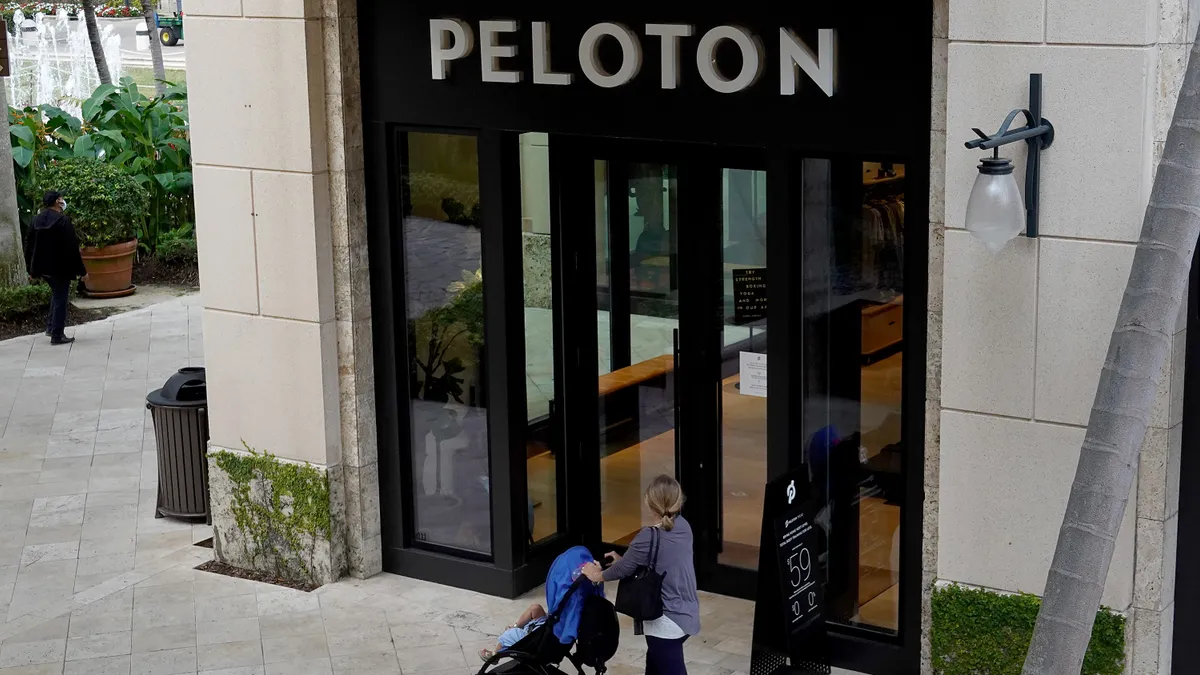As with everything else this year, the pandemic upset the holidays for retailers, forcing them to adjust to changing consumer behavior and safety demands. In a year that was heavily focused online, that meant taking many mainstays of the holiday season virtual and introducing more convenient (and touch-free) pickup options for wary consumers.
There are countless small things that changed as a result of the global health crisis, but here are some of the largest factors that impacted the holidays for retailers in 2020.
A Black Friday unlike any other
This year's Black Friday was utterly unlike any that came before it, starting with the fact that many large retailers actively worked to keep customers out of their stores as COVID-19 went through a predicted fall surge.
Discounts were drawn into November, and earlier, to entice customers to start their holiday shopping before the big shopping holiday. Online took center stage. And the trend of retailers opening on Thanksgiving, at least for this year, reversed like a receding tide. Even Walmart closed on the holiday for the first time in more than three decades.
All of those efforts showed in the numbers. Online purchasing on Black Friday hit a record, after weeks of going at elevated levels. At the same time, foot traffic fell by more than 50% according to some counts. The enclosed mall especially took a hit on visitors. Traffic to traditional malls was down 53.4%, according to Placer.ai, while traffic to outlet centers was down 47.7%. For traditional malls those numbers improved on Saturday and Sunday, but still remained well below past levels.
As with so many things this year, the pandemic accelerated trends already underway pre-pandemic. Black Friday the day mattered less. E-commerce mattered more. And the retailers with strong digital and omnichannel games flexed their advantage.
A very omnichannel Christmas
Several nonessential retailers in the spring temporarily shuttered their doors — either by choice or government mandate — to help stem the spread of the coronavirus. As a result, many consumers turned to e-commerce channels to purchase goods. But even as stores reopened, consumers' reliance on online shopping didn't wane.
Non-store retail sales tracked by the U.S. Department of Commerce increased nearly 26% in April from last year, while other categories tracked, like apparel, plunged 87% during the same period.
New challenges were introduced as a result, however, especially around shipping delays. Even Amazon, an e-commerce giant, faced disruptions that caused it to walk back its one-day delivery promise, limit assortment and postpone its annual Prime Day from its usual July date.
When Amazon hosted its sales event in October — spurring other major retailers like Walmart, Target and Best Buy to launch sales of their own — it unofficially kicked off the holiday season. The idea was to pull demand forward to help offset an influx of online orders (and subsequent shipping delays) closer to the holidays. These retailers also beefed up their hiring efforts with a focus around e-commerce and fulfillment services.
Online spending didn't subside heading into the remainder of the holiday season, with eMarketer predicting a 36% year-over year increase in online holiday sales to reach $190.5 billion. E-commerce sales increased 31.2% in October and 32.4% in November, according to the Commerce Department's figures.
To help manage online order surges, several retailers rolled out or ramped up in-store fulfillment options, like curbside pickup and buy online, pick up in store. As carriers created clear cutoff dates to accommodate for heightened demand, those fulfillment services proved especially beneficial for last-minute holiday shoppers.
Now with the holidays over, though, retailers brace for their next challenge: returns. Retailers can expect returns to increase some 50% to 100% from last year, according to LateShipment.com CEO Sriram Sridhar. This comes on top of Salesforce's projection earlier this year of $280 billion worth of returns.
More than half of brick-and-mortar retailers offer in-store returns of online purchases, according to omnichannel platform NewStore, potentially giving them an advantage over those that do not, which are forced to manage the shipment of returns on top of the initial purchases.
Virtual Santas and services
In a year where everything in-person slowed or came to a complete halt, stores worked to take everything virtual. COVID-19 forced retailers to push new tech services forward and get creative during a season that is typically high-touch and dependent on foot traffic.
One of the biggest signifiers of those changes came by the way of Macy's, which in September announced that its 94th annual Thanksgiving Day parade would be virtual and produced only as a televised event in order to take precautions against the pandemic. The company reduced the number of participants by around 75% and required social distancing and face masks. The company also utilized specialized vehicles to handle the parade's giant balloons.
Many malls and companies decided to make a visit with Santa — a touchstone of holiday shopping — virtual. Macy's, which has had the tradition since 1861, launched an "interactive, virtual experience" for its Santaland, Nordstrom made Santa available for 15-minute video calls for $20 with proceeds benefiting nonprofit organizations and Belk provided free phone calls from Santa.
Retailers also engaged in virtual shopping appointments. Some companies enlisted stylists to guide those experiences. While large department stores employed digital services, many small businesses even launched means for customers who didn't want to go in physical stores to virtually shop with owners.
Different winners and losers
In order to inhibit the spread of the pandemic, many employees and students were sent home to work, theaters and concert halls went silent, games were played to empty stands, even weddings were conducted by video conference. All that had a profound effect on what people bought in 2020.
To start, apparel sales slid drastically month after month throughout the year. Any retailer selling workwear had to either shake up their assortments (as seen at Banana Republic, which came up with something called "elevated fleece") or throw in the towel (like Tailored Brands, which filed for bankruptcy in August).
When people did buy clothes, it was the comfortable garments and activewear found at stores like Athleta and Lululemon. Sales of face masks, the year's surprise fashion statement, stoked revenue at retailers as diverse as Gap Inc. and Etsy. But those covered-up faces, along with limited to no socializing, also meant lower beauty sales.
By contrast, furniture and home goods sales skyrocketed as people fixed up their spaces for work or school, and to find some way to enjoy their own four walls. Wayfair in particular did something it never had since going public: turned a profit. People also bought office supplies, sporting goods, books, video games and grooming items.
The question on many minds is how long these pandemic-induced trends will last. Most consumers probably have little need for more furniture in any case. Otherwise, much depends on how long the pandemic itself goes on; even with vaccines being distributed, that remains unclear. Some observers believe there will be pent-up demand for apparel once people have somewhere to go again. But their disposable income, if they have any after a year of rising unemployment and income loss, may go instead to the travel and entertainment that they have been missing.
An uncertain consumer
The income inequality that was already emerging as a problem for many retailers had no chance of being repaired in 2020. As the pandemic helped strip the economy of nearly 10 million jobs since February, it ushered in new levels of anxiety and uncertainty about health and wealth.
In the spring, Congress passed a $3 trillion federal aid package, which included direct payments to individuals and families, plus job-protecting grants and loans to businesses. For those living paycheck to paycheck, it was a lifeline, and it mitigated the pandemic's damage to the economy overall. That buoyed retail sales in the ensuing months, until about October and November as the relief ran out. Toward the end of the year, while consumers may have done retailers' bidding in shopping early for the holiday season, many were seeking discounts, citing job or income loss.
Another, smaller round of federal support, a $900 billion bill passed just days before Christmas, could similarly juice the economy in early 2021. Wells Fargo economists called it "an income bridge for cash-strapped consumers and businesses heading into an otherwise bleak winter."
Even that level of relief was in jeopardy as the final days of the holiday season arrived after President Trump made some 11th-hour demands. Ultimately the package was signed Dec. 28. Regardless of stimulus efforts, retailers may not be the ones enjoying the most benefit from an end to the pandemic, considering that anticipated economic growth in the second half of next year will be "led by pent-up demand for consumer services," according to Wells Fargo.



















